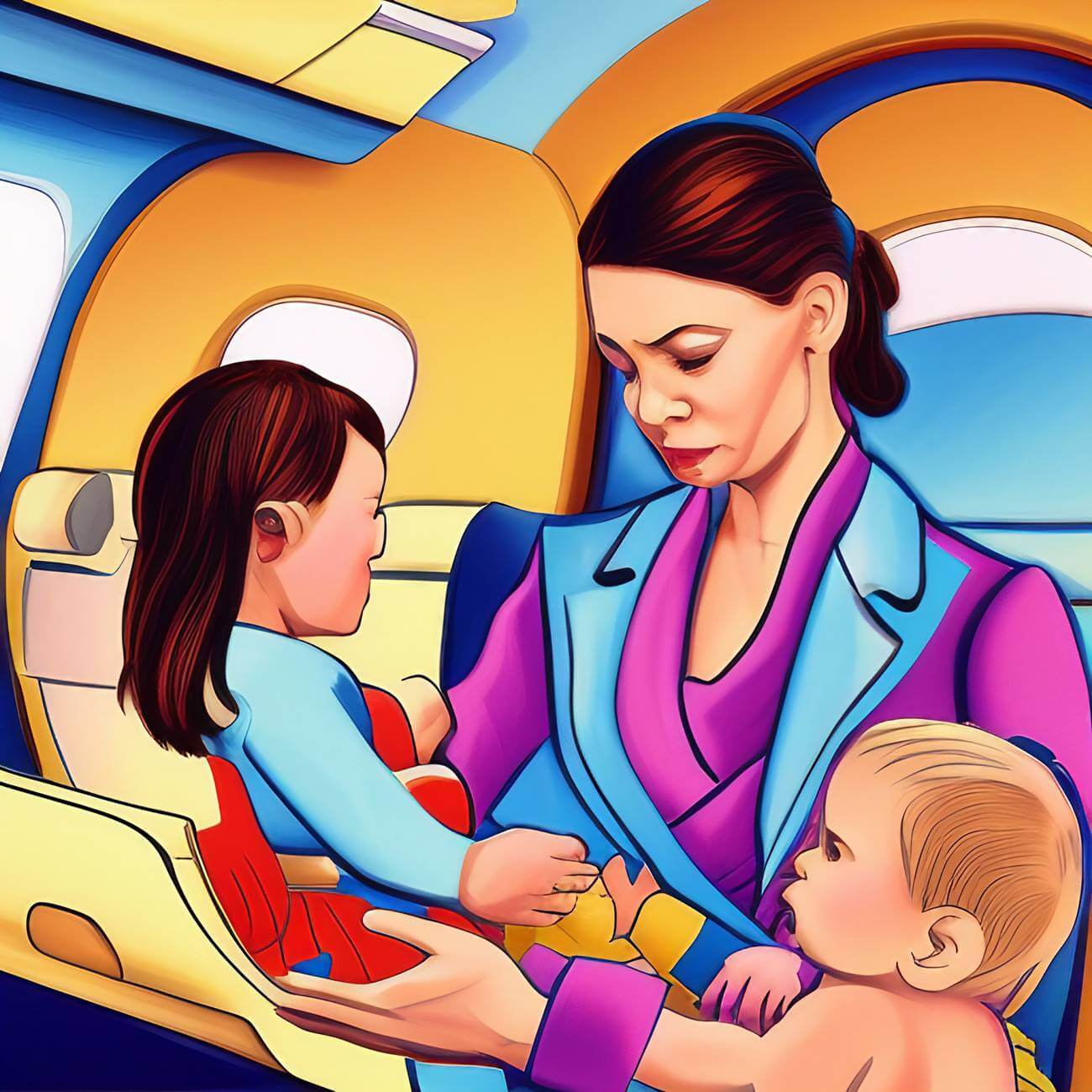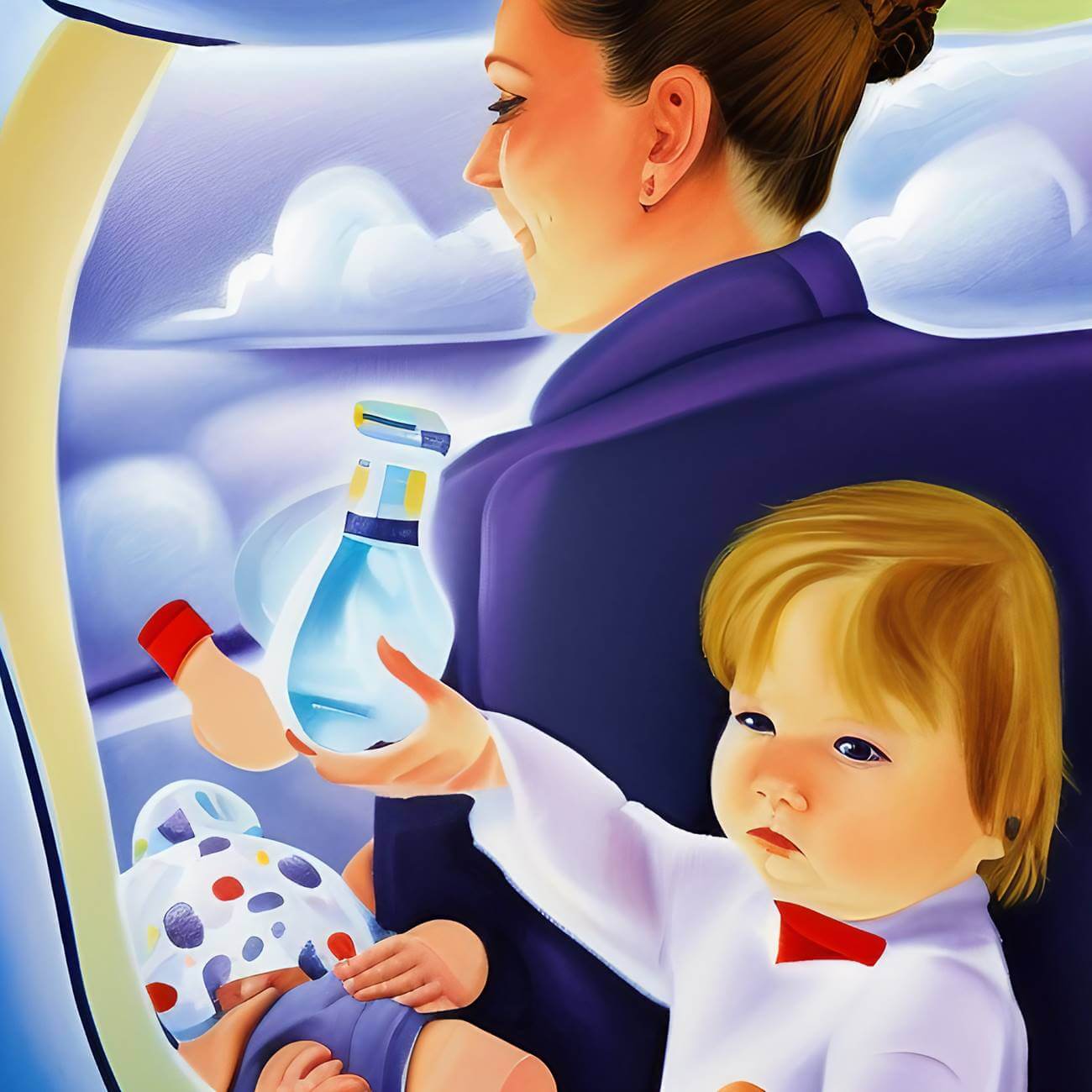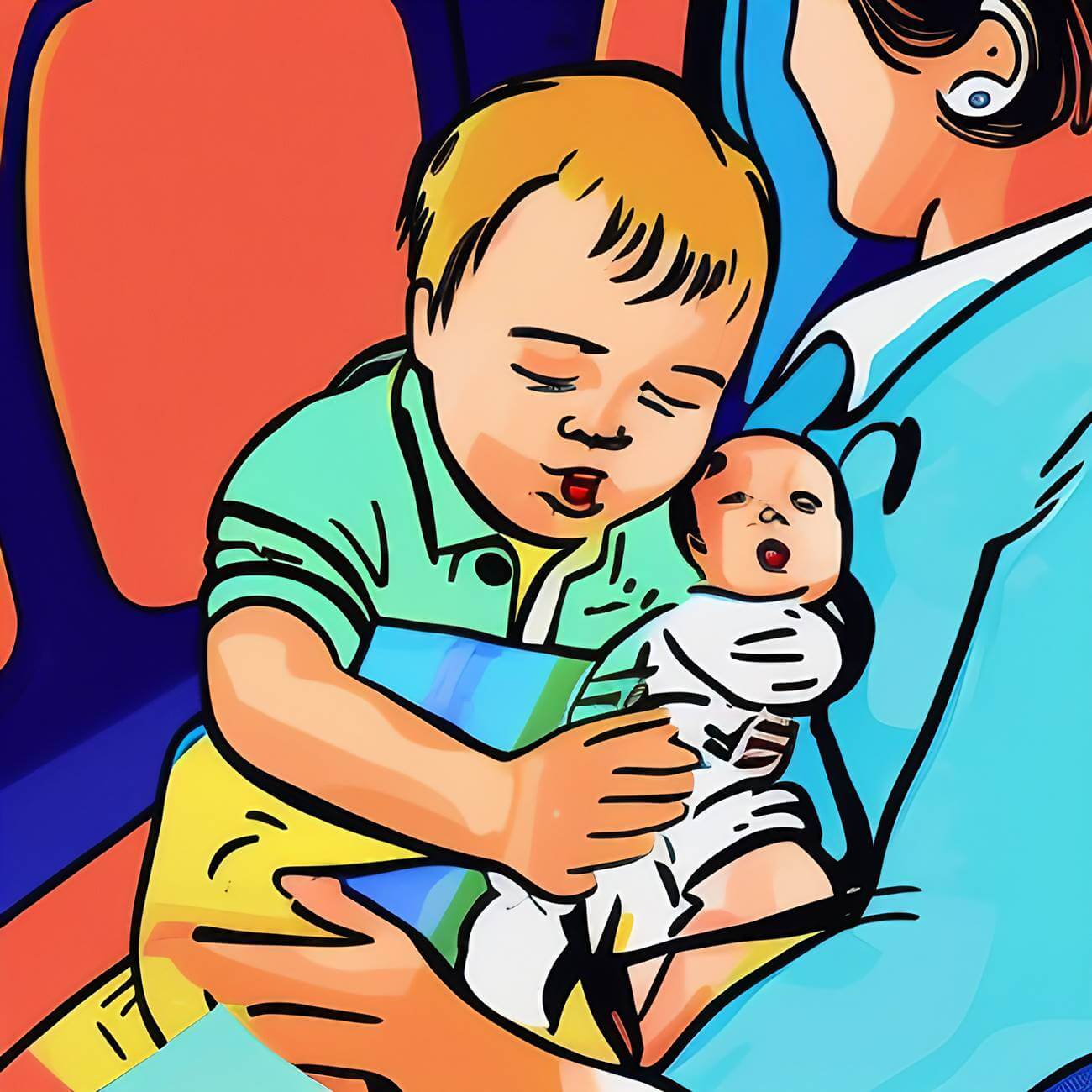Working as a flight attendant comes with great perks and advantages. Not only do you get to travel the world, but you also get to meet new people and experience new cultures. However, being a flight attendant is not all fun and games. If you have ever been on a flight with a crying baby, then you know how frustrating it can be. The baby is crying, the parents are struggling, and everyone around them is trying to get some sleep or just relax and enjoy the flight. But how do flight attendants handle crying babies?
Also Read: Cabin Crew Layover – Maximizing Hotel Layovers as a Flight Attendant
First and foremost, it’s important to remember that flight attendants are not babysitters. They are there to ensure the safety of all passengers and to provide them with any assistance they may need during the flight. With that being said, there are some things that flight attendants can do to help soothe a crying baby.
Contents

How to Handle Crying Babies: Things You Must Consider
Below are some important points to consider in this regard:
1. Help the Parents
If a baby is crying and the parents are having trouble consoling them, a flight attendant may offer to help out. This could involve anything from holding the baby for a few minutes so the parents can take a break, have their own bathroom visits, etc.
2. Provide Baby Bassinet
The first thing they will do is try to calm the baby down. This can involve anything from rocking the baby’s bassinet to giving the parents some tips on how to soothe their child. Some airlines provide what are known as “bassinets” for infants.
These are small cribs that attach to the bulkhead and provide a comfortable place for the baby to sleep during the flight. If an infant is crying and there is no bassinet available, the flight attendant may ask if another passenger would be willing to switch seats so that the mother or father can sit with the baby.
3. Offer another seat
Sometimes, if a baby is really upset and nothing seems to help, the flight attendant may ask the parents if they would like to move to another seat. This is usually done subject to availability, if there are empty seats available on the plane.
Every time flight attendants move passengers, especially parents with infants, safety protocols need to be adhered to and not compromised. For example, parents with infants cannot seat at emergency exits for take off and landing. At the end of the day, complying with safety standards will be much more important than the parents’ need to manage their crying infants. Safety regulations are in place to protect all passengers, not the parents with infant. Also, violation of safety protocols can impose hefty fines on the airlines and will reduce their overall safety rating, all the way to suspending them from taking any flight if they are deemed unsafe.
4. Give children something to look at
A lot of babies find visual stimulation soothing. Offer them a toy or colorful object to focus on, or ask the parents to take them for a walk if possible so they can see all the new sights and sounds around them. A lot of airlines offer baby toys and have TV systems in front of seats that can also help keep the infant distracted. Flight attendants can guide the parents with navigating the TV system in finding children-friendly shows for their infants.
Learn More: Seychelles Layover Guide: Best Things to Do in 24 Hours

Why do Babies Cry on Airplanes?
There are a few reasons babies cry on airplanes. First, the air pressure in the cabin can cause pain in their ears. This is because the pressure outside the plane is greater than the pressure inside the plane, and babies’ eardrums are very sensitive. The pain can be eased by having them suck on a pacifier or bottle during takeoff and landing.
Another reason babies cry on planes is because of the change in temperature. The temperature inside the plane can be chilly, and babies’ bodies are not very good at regulating their own body temperature yet. This can be alleviated by dressing them in layers or using a blanket.
Finally, babies cry on planes because they are away from their parents. This is probably the most difficult one to solve, but there are a few things you can do to help ease their anxiety. Flight attendant can offer a quiet place where the parents or guardians can hold your baby until they calm down.
Where is the Best Place to Sit on a Plane with a Baby?
When parents are flying with a baby for the first time, they might be wondering where the best place to sit on the plane is. There are a few things to consider when making this decision, such as whether they want an aisle or window seat and how easy it will be to access the bathrooms. Flight attendants are there to offer support and guidance from the beginning to make sure they and the passengers around them will have a comfortable flying experience.
Aisle or Window Seat?
If parents have not decided yet whether keeping their assigned seat is the best choice in managing the infant and if there are options to move due to availability of empty seats or passengers around them are willing to move, flight attendants can help them decide on whether aisle or window seat is better.
The first thing flight attendants need to know is whether the parents want an aisle or window seat. Flight attendants can then inform parents if they think the baby will sleep for most of the flight, then a window seat might be a good option so that they can lean against the wall and drift off to sleep. However, if they think the baby will be restless or need to stretch their legs, then an aisle seat might be a better choice so that they can walk up and down the aisle.
If the mother is breastfeeding, flight attendants should also consider whether they are more comfortable with an aisle or window seat. A window seat will give them some privacy when they’re breastfeeding, but an aisle seat will make it easier to get up and down to use the bathroom or grab something from their bag in the overhead compartment.
Also Read: 5-Day Trip to Italy: Milan, Lake Como, and Venice
Bathroom Access
Another thing to consider is how easy it will be to access the bathrooms with a baby in tow. As a flight attendant, you can assist parents with infants in securing an aisle seat, if not yet arranged by ground staff or pre-booked by the passenger. This will help them easily pop out and use the restroom without disturbing the other passengers. However, if they have a window seat, then they’ll either need to wake the baby up or ask someone else in the row to let them out. Again, they might ask assistance from the flight attendant in managing such scenarios.
Helping parents get a better, more practical seat from the beginning of the flight will help them manage bathroom visits better on their own without having the need to call the flight attendant all the time. Flight attendants should always be there to help however we have to consider sometimes they are also busy doing the service or performing other tasks considering there can be hundreds of other people on the aircraft to take care of.
It is also the duty of the flight attendant to inform parents/guardians with infant on the location of specific bathrooms with baby changing tables as not all aircraft bathrooms have these facility. They are strategically spread out in the aircraft and letting the parents/guardians know the closest to them will help them conveniently manage their needs.
Learn More: Do Cabin Crew Clean Toilets? Do Flight Attendant Clean Lavatories?

How to Ease a Baby’s Ear Pressure When Flying?
Here are some tips on how to ease a baby’s ear pressure when flying:
- Give the baby a bottle or pacifier during takeoff and landing. The sucking action will help relieve the pressure on the baby’s ears.
- If the baby is old enough and able to chew gum, have them chew gum during takeoff and landing. Again, the chewing action will help relieve the pressure in the baby’s ears.
- The parents can also try yawning or chewing gum themselves to show their baby how it’s done! Baby will probably want to copy the parents and hopefully, this will help relieve their ear pressure as well.
- Try using an infant nasal spray such as Saline Solution right before takeoff and landing. This will help moisturize the inside of the baby’s nose and hopefully make the descent and ascent a little smoother for them.
- If parents have an older child who is experiencing ear pain, try having them drink lots of fluids or chew gum to help with the pain. Earplugs might also help if they are old enough to not swallow them.
Helping the baby manage ear pressure during flight is the parents/guardians job and not the flight attendant. However, there are times when flight attendants have to guide the parents such as by informing them on the options above. They can be first time flyers with infants and unsure or unprepared how to manage the situation, they can simply be very busy and distracted with a crying baby that they forget the simple things they can do. Flight attendants can remind them on these simple tricks and they are usually very grateful for it.
A lot of airlines also offer baby amenities with include baby bottles, pacifier, baby toys, etc. which flight attendants can offer to help distract the infant.
Read More: How to Become a Flight Attendant in USA
Summary
The crying baby on a plane can be one of the most stressful aspects of air travel. For flight attendants, it’s important to have a strategy for how to best deal with these situations. They have to deal with all types of people, from business travelers to vacationers and children on long flights. And one thing they must be prepared for is crying babies.
There are a few different ways that flight attendants can handle crying babies: they can try to soothe the child, offer the parents help, or find an appropriate time to move the baby to another part of the plane. No matter what approach is taken, it’s important that flight attendants remain calm and professional in order to set a good example for other passengers and maintain safety on the plane.